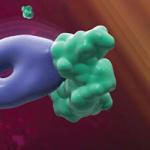
Mike Michaelides, Ph.D.
Senior Investigator
Neuroimaging Research Branch, Biobehavioral Imaging and Molecular Neuropsychopharmacology Unit
NIDA
Research Topics
Our laboratory implements state-of-the-art biobehavioral molecular imaging approaches integrated alongside cutting-edge neuromodulatory, molecular, pharmacological, transgenic, and bioinformatic methods for identifying behaviorally-relevant neurobiological mechanisms critical for substance abuse and addiction. Special emphasis is placed on reverse-translating findings from clinical research to animals. In addition, clinical relevance of mechanisms studied in animals is determined in humans via imaging, bioinformatics, genetics and postmortem tissue examinations.
Selected Publications
- Gomez JL, Bonaventura J, Lesniak W, Mathews WB, Sysa-Shah P, Rodriguez LA, Ellis RJ, Richie CT, Harvey BK, Dannals RF, Pomper MG, Bonci A, Michaelides M. Chemogenetics revealed: DREADD occupancy and activation via converted clozapine. Science. 2017;357(6350):503-507.
- Magnus CJ, Lee PH, Bonaventura J, Zemla R, Gomez JL, Ramirez MH, Hu X, Galvan A, Basu J, Michaelides M, Sternson SM. Ultrapotent chemogenetics for research and potential clinical applications. Science. 2019;364(6436).
- Bonaventura J, Lam S, Carlton M, Boehm MA, Gomez JL, Solís O, Sánchez-Soto M, Morris PJ, Fredriksson I, Thomas CJ, Sibley DR, Shaham Y, Zarate CA Jr, Michaelides M. Pharmacological and behavioral divergence of ketamine enantiomers: implications for abuse liability. Mol Psychiatry. 2021;26(11):6704-6722.
- Levinstein MR, De Oliveira PA, Casajuana-Martin N, Quiroz C, Budinich RC, Rais R, Rea W, Ventriglia EN, Llopart N, Casadó-Anguera V, Moreno E, Walther D, Glatfelter GC, Weinshenker D, Zarate CA Jr, Casadó V, Baumann MH, Pardo L, Ferré S, Michaelides M. Unique pharmacodynamic properties and low abuse liability of the µ-opioid receptor ligand (S)-methadone. Mol Psychiatry. 2024;29(3):624-632.
Related Scientific Focus Areas



Biomedical Engineering and Biophysics
View additional Principal Investigators in Biomedical Engineering and Biophysics


This page was last updated on Monday, November 24, 2025